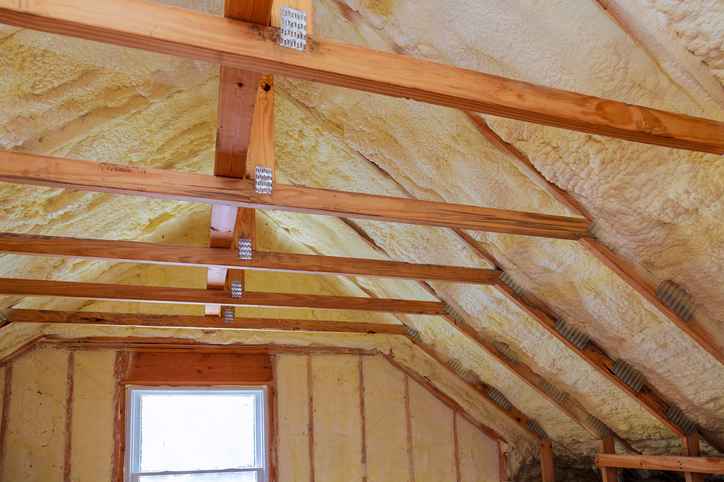It’s true – ensuring your attic is properly ventilated can help improve your home’s energy efficiency, extend your roof’s lifespan, and prevent mold growth and damage!
The attic space is sealed off from the rest of your home, and your living areas are fully insulated themselves. However, if your attic is poorly ventilated and gets too hot and humid or dry and cold, it could start affecting the rest of your house. An attic with proper ventilation should have an equal amount of entering and exiting air circulating to prevent air from being stored and impacting your house’s temperature.
Making sure your attics ventilation is up to par can go a long way, so these five tips for improving your attic ventilation are here to help:
Assess the situation.
Before making any changes, it’s important to assess what extra ventilation your attic needs, and if so, how much. Checking based on the current season is the most helpful:
- In the summer – On a hot summer day, touch your ceiling with your hand. If it is feeling noticeably warm, this means your attic is storing hot air, and more ventilation is needed.
- In the winter – If you notice ice buildup on your eaves during the winter season, better ventilation is needed in your attic.
Install roof vents.
Soffit planks, like your siding, help connect the roof’s overhang to the exterior walls of your home and conceal the roof beams. Soffit vents provide a space for outside air to enter your attic from below to create adequate circulation when paired with roof vents. Like roof vents, it’s also important to check that they aren’t blocked by debris regularly.
Install soffit vents.
Soffit are planks, like your siding, that help connect the overhand of the roof to the exterior walls of your home and conceal the roof beams. Soffit vents provide a space for outside air to enter your attic from below to create adequate circulation when paired with roof vents. Like roof vents, it’s also important to check that they aren’t being blocked regularly.
Install gable vents.
When roof and soffit vents aren’t enough to keep your attic properly ventilated, gable vents are the next step to get additional airflow. Located at the gable ends of your roof, these vents help air circulate out of the attic space and often have controllable openings as well. It’s common to see homes with only gable vents, which are rarely sufficient, and roof and soffit vents will be needed.
Use fans to improve the airflow.
Since attic ventilation relies on the natural rising of hot air, if you live in a more humid climate, fans may be needed to help increase airflow. Attic fans can be powered electrically or by solar panels, and some can even be connected to a thermostat to go on automatically.
Contact Landmark Exteriors for roofing inspections, repairs, and installations!
The experts at Landmark Exteriors are here to help ensure your home’s roofing systems look great and function properly for years to come! Give us a call at (203) 838-3838 or visit our website to learn more.

